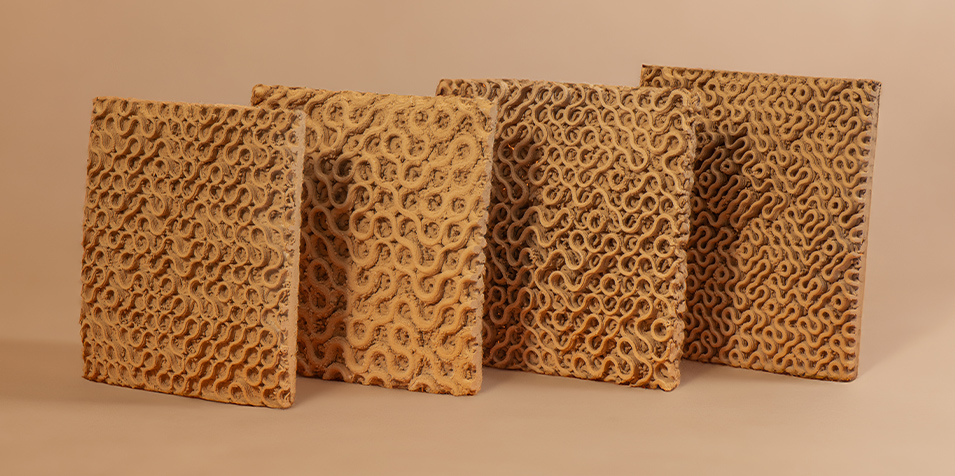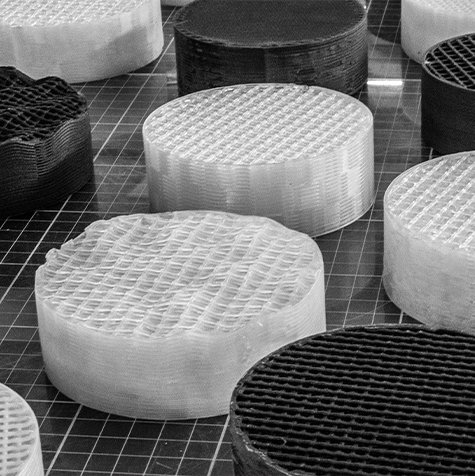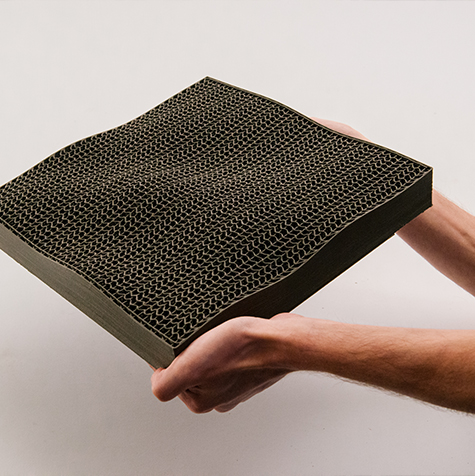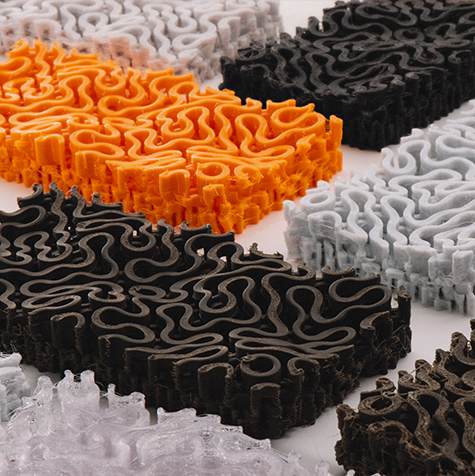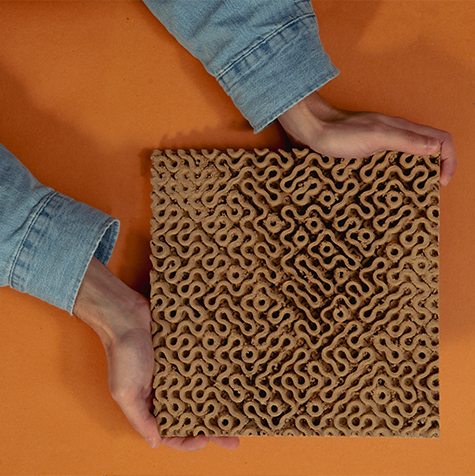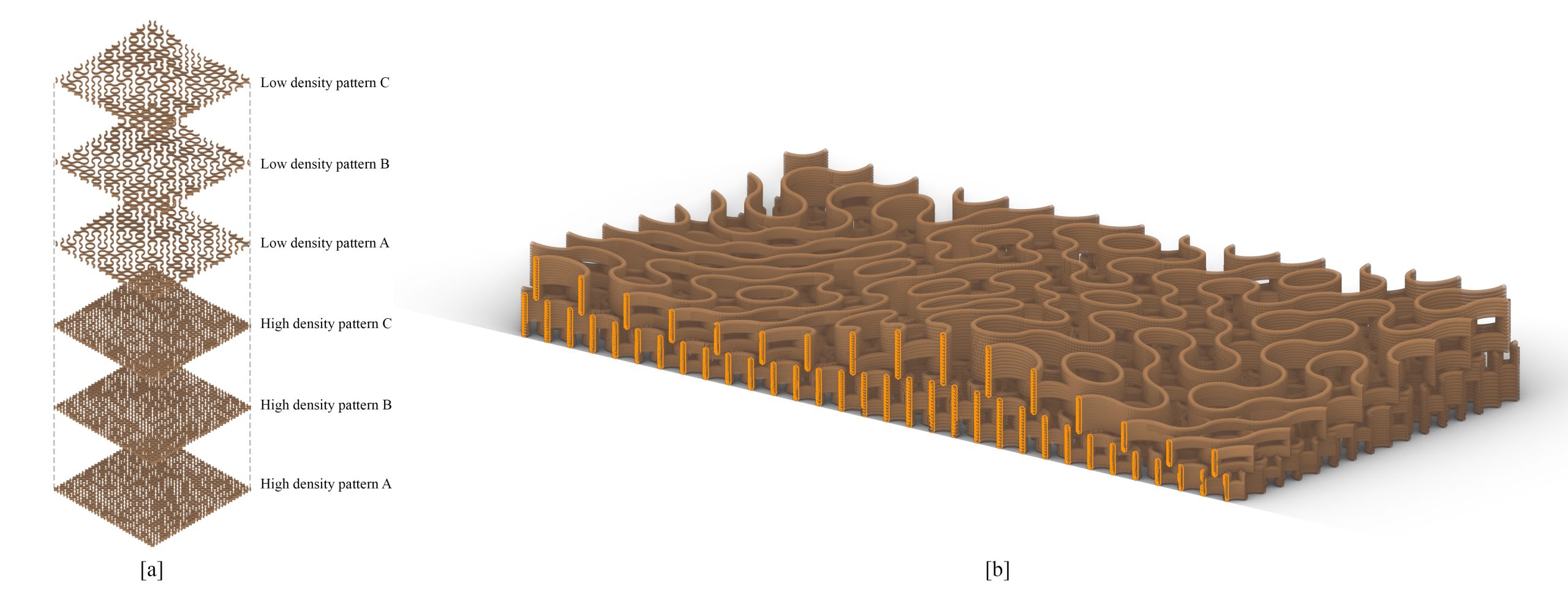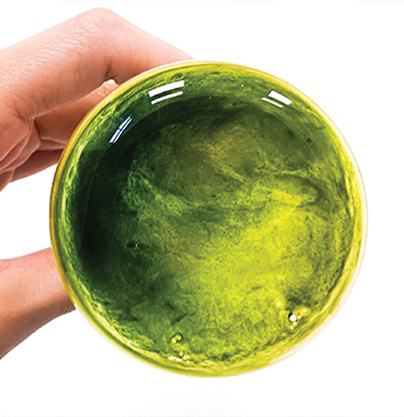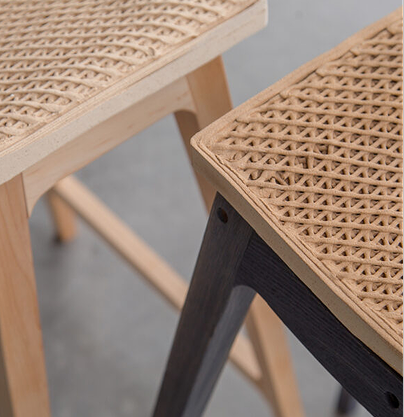Acoustic performance is a critical factor in shaping the comfort, functionality, and spatial experience of built environments. Despite its significance, acoustics are often considered late in the design process, typically through post-construction interventions. This research proposes an integrated design-to-fabrication methodology for developing sustainable acoustic components by leveraging additive manufacturing (AM) and customized toolpath strategies. Traditional acoustic approaches—absorption and scattering—are reimagined through the fabrication of hybrid geometries that combine both functions in a single component.
The research focuses on the use of bio-based materials and explores how toolpath design, particularly non-planar printing, can influence acoustic behavior by modifying surface geometry, porosity, and microstructure. Addressing common AM limitations such as stair-stepping effects, the research demonstrates how advanced toolpath control enhances both surface quality and acoustic performance. A series of experimental prototypes featuring lattice structures and micro-perforated geometries are analyzed to evaluate absorption coefficients, scattering efficiency, and material distribution. This approach enables the creation of scalable, adaptable, and environmentally responsible acoustic solutions, offering a new paradigm for integrating acoustic performance into early-stage architectural design.
